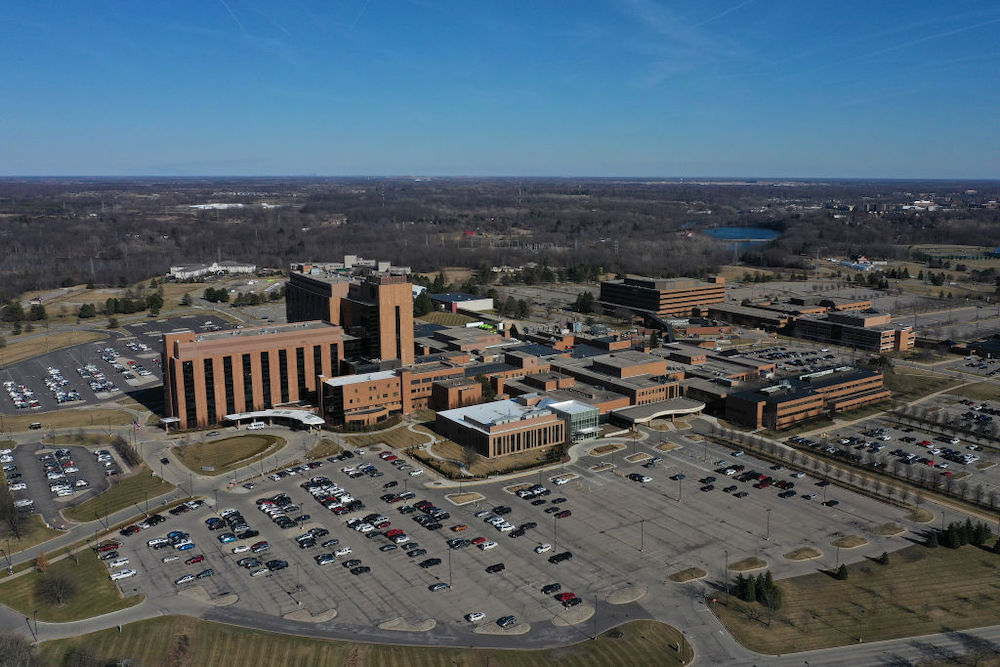- On March 30, the city unveiled a $1 billion plan to become carbon neutral in 10 years even as schools and businesses were closed because of COVID-19.
- Ann Arbor officials say that the coronavirus outbreak underlines the plan’s importance.
- While other government agencies are curbing enforcement of environmental rules, Michigan city sees the action as a cornerstone to creating a resilient future.
One of the U.S.’s most progressive towns, known for its early adoption of liberal marijuana and pro-choice laws, is plowing ahead with a climate plan amid the coronavirus pandemic — insisting that now is the time to prepare the city for future catastrophes.
Ann Arbor, Michigan late last month unveiled a $1 billion plan to achieve carbon-neutrality by 2030. At the same time, the federal government was using COVID-19 as a reason to curb enforcement of environmental regulations.
Ann Arbor sustainability manager Missy Stults says the pandemic has prompted officials to look at ways to fast-track changes leading to greater resiliency so that the city is better prepared for the next pandemic or extreme weather event.
“This is a transformational moment,” Stults told Karma. “While COVID-19 isn’t a climate crisis, there are parallels. It underlines the importance of investing in resiliency.”
Ann Arbor’s “A2Zero” draft plan lays out strategies and actions needed to reach its goal. They include changing the Ann Arbor’s power grid to 100% renewable energy, boosting public transit, cutting miles driven, making homes and businesses more efficient and moving from fossil fuel–powered vehicles to electric ones.
The plan was prepared after the city council declared a climate emergency in November. The declaration came with an order for city staff to release a carbon neutrality blueprint by March 31. The preparation of the document coincided with the spread of the coronavirus, which added urgency to the process, Stults said.
“The response to COVID-19 has been fast and the impact personal,” Stults said. “With climate change, the response has been slow and felt a lot less personal, something left for the kids or future generations to address.
“There are far more parallels and lessons to be learned,” she said.
Governor Gretchen Whitmer issued an order on March 23 that closed businesses that are “not necessary to sustain or protect life” and directed residents to stay at home with only a few exceptions. Michigan responded to the outbreak by closing schools at the end of class on March 13, after already shutting the state’s public universities. Ann Arbor public schools began scheduled, structured distance learning on April 6.
“If the physical grid went down during COVID-19 it would cause enormous cascading impacts through society,” Stults said. “This underscores the importance of microgrids and integrating renewable energy across the grid because they are more resilient.”
Climate change, fueled by carbon emissions, has been cited as a reason for increasingly erratic weather that’s stressing infrastructure. A move to clean, renewable energy produced nearby can increase the resiliency of electricity output and distribution, studies show.
“We are working to make sure that resiliency is core to the city, it’s a core service,” Stults said. “Our mission is to mitigate, adapt and do all of our work with a grounding in equity.”
Most of the projected costs are related to improving transportation, including $657 million for expanded local and regional transit, $170 million for park-and-ride services and $80.6 million to move to electric buses. Curbing vehicle exhaust will also help lower mortality rates.
The Environmental Protection Agency temporarily relaxed enforcement of environmental regulations and fines during the COVID-19 outbreak. Kathy Fallon Lambert at Harvard University told E&E News said this policy change endangers the health of people who are already vulnerable to respiratory illnesses.
‘“COVID-19 is laying bare the vulnerabilities of our system,” Stults said. “It puts a focus on the disparities in our society.”
Photo by Gregory Shamus/Getty Images






















